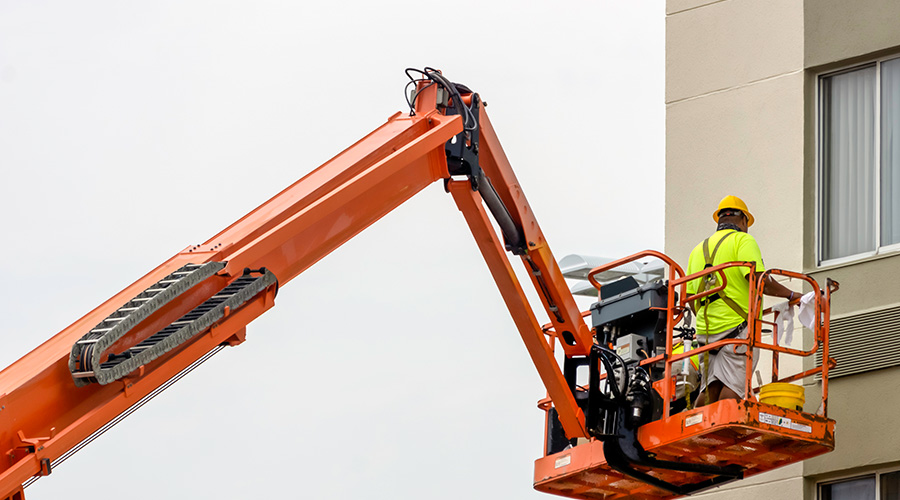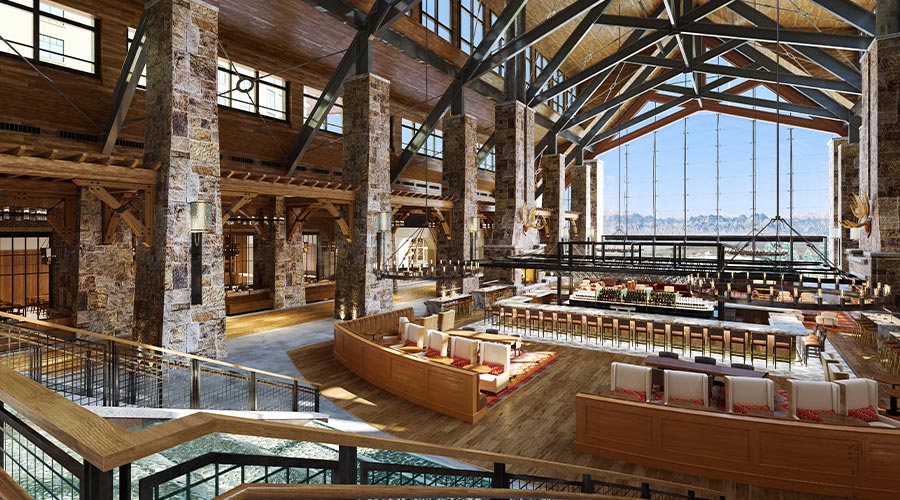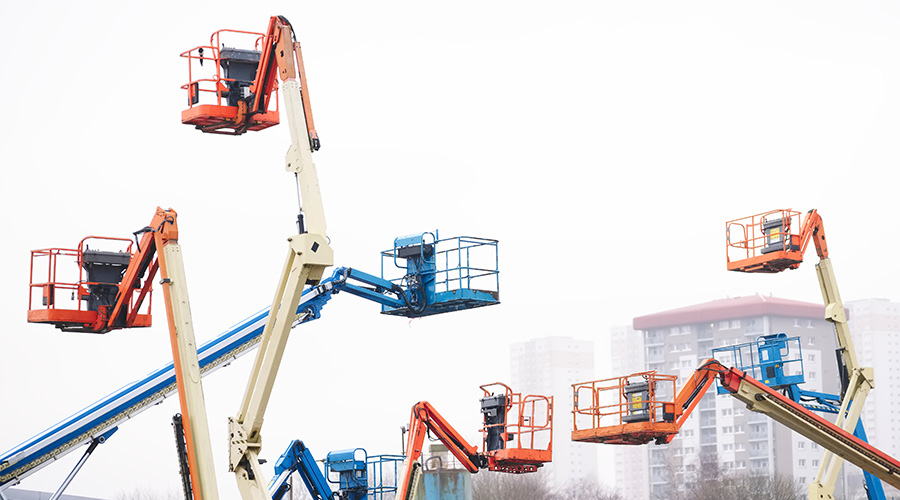Lift Features Include Air Compressor, Generator, Safety Systems
To fine-tune the equipment decision, managers also can weigh the usefulness of several features that can greatly improve a technician's productivity in difficult-to-access locations:
Work-platform air compressor. A platform-mounted, 125-psi air compressor provides air for power tools and paint sprayers. A compressed-air tool with a reducing valve for adjustment is beneficial where using electric power tools is unsafe or on high-bay painting projects using spray equipment. The compressor eliminates the need to tie into a ground-based system and run hoses to the job site.
Welding and cutting equipment. With such units on the work platform, technicians do not have to run hoses or electric cables and grounds from a ground-based welder to the platform when adding or replacing overhead structural steel or piping systems. With these units, technicians can set up any type of welding or burning equipment, including oxy-fuel, stick, plasma, and tungsten inert gas (TIG) systems.
Glass transporter. Using this accessory, workers can transport glass safely to an elevated job site on the work platform. The transporter eliminates hoisting the panels to the platform and protects them from damage.
Electric generator. A generator located on the work platform provides power for high-elevation work requiring electricity. The generator eliminates the time and extra work required in connecting to a ground-level power source and running extension cords to the work site.
Light packages. Managers can consider two strategies to improve productivity using light packages. First, on-board systems can provide light for nighttime work, and they can illuminate dark areas and help operators can see the job site by illuminating the surroundings. Second, work-platform lamp holders for overhead relamping jobs can secure the lamps, prevent damage, and eliminate time hoisting and handling lamps during replacement.
Pipe and conduit racks or work-platform extensions. Attached to the outside of the platform, these accessories create more space on the platform for workers by holding piping, conduit and other materials. They also enable workers to save time by more efficiently elevating material to the work site.
Safety systems. An important part of overhead work is making sure workers are safe. Fall-arrest systems that attach to specifically designed restraints on the work platform allow workers to operate safely while still being able to use both hands for the job.
Finally, on-site testing offers managers the greatest assurance the lift they select is appropriate for the most applications. Managers can rent the equipment for a specified day, week or month, whichever is sufficient to put the lift through the required tests. The key to successful testing is having a well-trained technician or manufacturer's representative perform the evaluation to ensure managers can thoroughly weigh the functional and safety features and accessories.
Related Topics:















